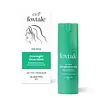What's inside
What's inside
 Key Ingredients
Key Ingredients

 Benefits
Benefits

 Concerns
Concerns

 Ingredients Side-by-side
Ingredients Side-by-side

Water
Skin ConditioningPropylene Glycol
HumectantHydroxyethyl Acrylate/Sodium Acryloyldimethyl Taurate Copolymer
Emulsion StabilisingGlycolic Acid
BufferingGlycerin
HumectantLactic Acid
BufferingGluconolactone
Skin ConditioningOctyldodecanol
EmollientOctyldodecyl Xyloside
EmulsifyingPEG-30 Dipolyhydroxystearate
EmulsifyingMandelic Acid
AntimicrobialPolyacrylate-13
Polyisobutene
Polysorbate 20
EmulsifyingTocopherol
AntioxidantPanthenol
Skin ConditioningPhenoxyethanol
PreservativeSodium Phytate
Ethylhexylglycerin
Skin ConditioningSodium Hydroxide
BufferingParfum
MaskingWater, Propylene Glycol, Hydroxyethyl Acrylate/Sodium Acryloyldimethyl Taurate Copolymer, Glycolic Acid, Glycerin, Lactic Acid, Gluconolactone, Octyldodecanol, Octyldodecyl Xyloside, PEG-30 Dipolyhydroxystearate, Mandelic Acid, Polyacrylate-13, Polyisobutene, Polysorbate 20, Tocopherol, Panthenol, Phenoxyethanol, Sodium Phytate, Ethylhexylglycerin, Sodium Hydroxide, Parfum
Water
Skin ConditioningPropylene Glycol
HumectantButylene Glycol
HumectantGlycerin
Humectant3-O-Ethyl Ascorbic Acid
Skin ConditioningAloe Barbadensis Leaf Extract
EmollientAscorbic Acid
AntioxidantNiacinamide
SmoothingCicada Extract
AntioxidantKojic Acid
AntioxidantDipotassium Glycyrrhizate
HumectantPolysorbate 20
EmulsifyingHyaluronic Acid
HumectantNeopentyl Glycol Diheptanoate
EmollientFerulic Acid
AntimicrobialPhenoxyethanol
PreservativeEthylhexylglycerin
Skin ConditioningHydroxyethylcellulose
Emulsion StabilisingXanthan Gum
EmulsifyingTocopheryl Acetate
Antioxidant4-Butylresorcinol
AntioxidantWater, Propylene Glycol, Butylene Glycol, Glycerin, 3-O-Ethyl Ascorbic Acid, Aloe Barbadensis Leaf Extract, Ascorbic Acid, Niacinamide, Cicada Extract, Kojic Acid, Dipotassium Glycyrrhizate, Polysorbate 20, Hyaluronic Acid, Neopentyl Glycol Diheptanoate, Ferulic Acid, Phenoxyethanol, Ethylhexylglycerin, Hydroxyethylcellulose, Xanthan Gum, Tocopheryl Acetate, 4-Butylresorcinol
 Reviews
Reviews

Ingredients Explained
These ingredients are found in both products.
Ingredients higher up in an ingredient list are typically present in a larger amount.
Ethylhexylglycerin (we can't pronounce this either) is commonly used as a preservative and skin softener. It is derived from glyceryl.
You might see Ethylhexylglycerin often paired with other preservatives such as phenoxyethanol. Ethylhexylglycerin has been found to increase the effectiveness of these other preservatives.
Glycerin is already naturally found in your skin. It helps moisturize and protect your skin.
A study from 2016 found glycerin to be more effective as a humectant than AHAs and hyaluronic acid.
As a humectant, it helps the skin stay hydrated by pulling moisture to your skin. The low molecular weight of glycerin allows it to pull moisture into the deeper layers of your skin.
Hydrated skin improves your skin barrier; Your skin barrier helps protect against irritants and bacteria.
Glycerin has also been found to have antimicrobial and antiviral properties. Due to these properties, glycerin is often used in wound and burn treatments.
In cosmetics, glycerin is usually derived from plants such as soybean or palm. However, it can also be sourced from animals, such as tallow or animal fat.
This ingredient is organic, colorless, odorless, and non-toxic.
Glycerin is the name for this ingredient in American English. British English uses Glycerol/Glycerine.
Learn more about GlycerinPhenoxyethanol is a preservative that has germicide, antimicrobial, and aromatic properties. Studies show that phenoxyethanol can prevent microbial growth. By itself, it has a scent that is similar to that of a rose.
It's often used in formulations along with Caprylyl Glycol to preserve the shelf life of products.
Polysorbate 20 is made by combining ethoxylation of sorbitan, ethylene oxide, and lauric acid. It is a mild cleansing agent, surfactant, and emulsifier.
As a surfactant, it helps collect dirt and oils for washing. Emulsifiers prevent oils and water from separating.
Polysorbate 20 also adds scent to a product. Since it is made using sorbitol, it has a sweet scent. Sorbitol can also be found in fruits such as apples and peaches.
The lauric acid used to create Polysorbate 20 is often derived from coconuts.
Polysorbate 20 may not be fungal acne safe.
Learn more about Polysorbate 20Propylene Glycol is an odorless, colorless liquid. As a humectant, it helps skin retain moisture. It also aids in delivering active ingredients.
Another role of this ingredient is preventing a product from melting or freezing. Propylene glycol also adds antimicrobrial properties to a product, elongating product lifespan.
This ingredient is considered an organic alcohol and commonly added into both cosmetics and foods.
Those with sensitive skin or conditions may develop a rash when using this ingredient.
Learn more about Propylene GlycolWater. It's the most common cosmetic ingredient of all. You'll usually see it at the top of ingredient lists, meaning that it makes up the largest part of the product.
So why is it so popular? Water most often acts as a solvent - this means that it helps dissolve other ingredients into the formulation.
You'll also recognize water as that liquid we all need to stay alive. If you see this, drink a glass of water. Stay hydrated!
Learn more about Water